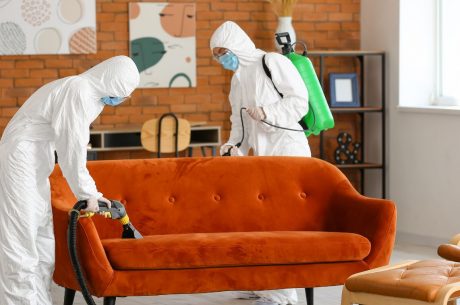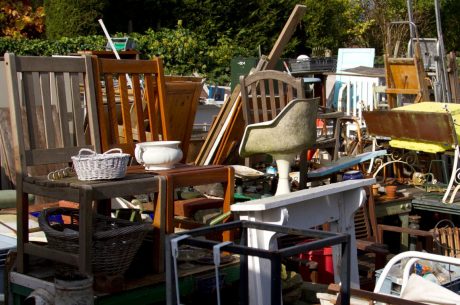Clutter can start small, but in cases of hoarding, it quickly takes over living spaces, creating hazards, stress, and emotional strain. Imagine walking into a home where every surface is piled high, exits are blocked, and even basic cleaning feels impossible. This is the reality for many families.
Handling it alone can be overwhelming and even dangerous. That’s where a structured, professional approach becomes essential. Understanding the hoarding cleanup process not only clarifies what to expect but also highlights why each step is crucial for safety, organization, and long-term well-being. With the right guidance, individuals can reclaim their home, reduce health risks, and regain a sense of control over their environment.
Understanding the Need for a Professional Hoarding Cleanup
When faced with severe clutter, it’s not enough to simply throw things away. Every home with hoarding tendencies presents unique challenges, from safety hazards and blocked pathways to hidden health risks and emotional attachment to belongings. Attempting to clean without a plan can increase stress and even worsen the situation.
Fire hazards are another major concern. According to the U.S. Fire Administration, blocked exits and overcrowded rooms in hoarded homes can make emergencies far more dangerous, underscoring the need for a careful cleanup approach.
That’s why the hoarding cleanup process follows a series of structured steps designed to address both physical and emotional aspects. Each phase, from initial assessment to aftercare, plays a critical role in ensuring the space is restored safely and effectively. Understanding this process helps families and individuals feel prepared and supported as they take the first steps toward reclaiming their home.
Step-by-Step Process and Key Insights
Tackling hoarding requires more than a quick cleanout; it’s a journey that unfolds in carefully structured stages. Each step has its own purpose, from assessing safety concerns to offering emotional support after the home is restored. By breaking it down into smaller phases, the hoarding cleanup process becomes less overwhelming and far more effective. This clear framework ensures that nothing is overlooked while giving the individual time and space to adjust at every stage.
Step 1 – Initial Assessment and Planning
The first step begins with an on-site evaluation where trained professionals inspect the home to understand the scale of clutter and risks involved. This assessment identifies fire hazards, blocked exits, or health dangers that need urgent attention. Creating a plan helps outline priorities, timelines, and safety measures, forming the foundation of the hoarding cleanup process.
Step 2 – Sorting and Organizing Items
Once the plan is in place, the focus shifts to carefully sorting through belongings. Items are grouped into categories such as keep, donate, recycle, or discard. This step is done respectfully, giving the homeowner a voice in decisions. A professional team ensures the sorting process is efficient yet compassionate, helping reduce the overwhelming burden of choice.
Step 3 – Decluttering and Waste Removal
After items have been sorted, the next stage involves physically removing what no longer serves a purpose. Trash, hazardous materials, and broken items are taken out systematically. Specialized disposal services may be required for biohazards or sharp objects. Following this structured approach keeps the hoarding cleanup process organized and manageable, allowing progress without causing more stress.
Step 4 – Deep Cleaning and Sanitization
Clearing the clutter reveals deeper issues that may have gone unnoticed, such as mold growth, pest infestations, or lingering odors. At this stage, professionals use industrial-grade cleaners and equipment to restore cleanliness. A professional cleanup service addresses sanitation thoroughly, ensuring the home is not only clear of clutter but also healthy to live in.
Step 5 – Repairs and Home Restoration
Hoarding often leaves behind physical damage. Walls may need repainting; floors may require repairs, and plumbing or electrical systems might need attention. These repairs form an essential part of the hoarding cleanup process because they return the home to a safe and functional condition. Small fixes can make a significant difference in helping the individual reconnect with their space.
Step 6 – Emotional Support and Aftercare
Beyond physical cleaning, emotional recovery plays a vital role. Many individuals face anxiety or grief when parting with possessions. With the guidance of counselors and ongoing support, they can adjust to their renewed environment. A professional hoarding cleanup often extends beyond cleaning by connecting individuals with aftercare services to prevent relapse and maintain progress, while also playing an important role in overall mental health and recovery.

Benefits of Following a Structured Cleanup Process
When carried out in a thoughtful sequence, the hoarding cleanup process transforms more than just a home. It improves safety by removing hazards, enhances hygiene, and allows rooms to be used as intended again. Just as importantly, it brings a sense of relief, helping individuals feel supported as they regain control of their lives and living space.
A step-by-step approach also minimizes the risk of overlooking hidden issues, such as mold or structural damage, that often accompany hoarded environments. Over time, this structured method builds trust and consistency, creating lasting change rather than temporary fixes.
Conclusion
Each stage of the professional hoarding cleanup journey works together to create meaningful change. From assessment to aftercare, the process brings structure, safety, and support. For individuals and families facing hoarding challenges, understanding this pathway provides reassurance that recovery is possible. It helps residents regain control of their space, making daily life safer and more manageable.
With the guidance of trained professionals, lasting results can be achieved for both the home and those living in it. If you or a loved one is ready to take the first step, reach out to a professional hoarding cleanup team today.
FAQs
Q1. How long does a hoarding cleanup process usually take?
A: The timeline depends on the size of the home and the amount of clutter. Some cleanups take a few days, while more complex cases may require weeks. Every hoarding cleanup process is customized to match the situation’s needs.
Q2. What makes professional hoarding cleanup different from regular cleaning?
A: Unlike routine cleaning, a professional hoarding cleanup involves safety planning, specialized equipment, and emotional support. It goes far beyond surface tidying to ensure long-term recovery.
Q3. Can families be involved in the cleanup process?
A: Yes, family members can participate if the individual is comfortable. Their involvement in the hoarding cleanup process often provides emotional reassurance and encouragement while professionals handle the heavy work.




 PuroClean of McLean and West Falls Church
PuroClean of McLean and West Falls Church